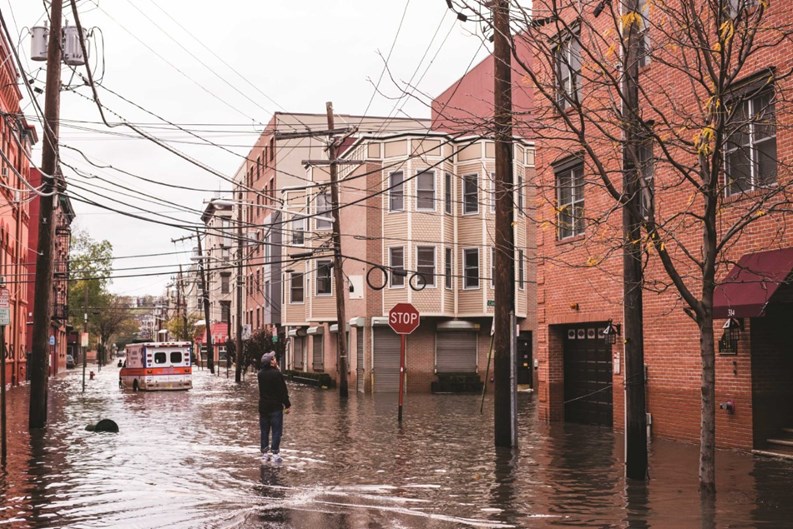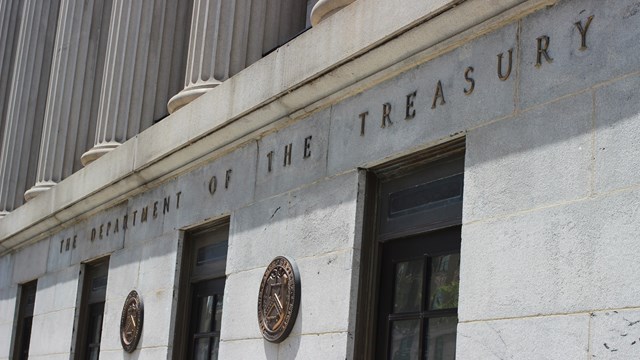While the spirits of New Jersey residents remain resilient, the lingering impact of Superstorm Sandy—the fiercest weather event to hit the East Coast in recent history—is still being felt acutely by the Garden State. Sandy left a path of death, destruction and utter devastation from the Caribbean to New York City, with about 40 New Jerseyans among the 285 people killed by the storm and its attendant flooding.
A Wave of Destruction
“So many areas of New Jersey sustained unimaginable damage during Hurricane Sandy,” says Christina Banasiak, president of the New Jersey Association of Realtors (NJAR). “Two very notable areas were Hoboken and Seaside Heights, where flooding ripped through both municipalities and left many stranded or without homes.”
The superstorm is being blamed for roughly $70 billion in damage and other losses, the vast majority of which was in New Jersey and New York. Hitting two days shy of Halloween, Sandy is the second-costliest storm in U.S. history after 2005’s Hurricane Katrina collided with New Orleans.
“Now, nine months later, we’re seeing the resilience New Jerseyans are famous for, with an overwhelming desire to rebuild our shore towns and restore all the areas devastated by Sandy,” says Banasiak. “Most people are displaying a positive attitude, looking towards an even better New Jersey, which is incredibly inspiring in the face of such a disaster.”
Banding Together
Oscar Wilde once said “Experience is one thing you can’t get for nothing.” And while no person, state or entity wants to endure a storm the magnitude of Sandy, prior weather related crises served as an education. “New Jersey was well prepared for Sandy,” says Conor Fennessy, vice president of government affairs for the New Jersey Apartment Association (NJAA). “There were absolutely lessons learned from Hurricane Irene and this was critical to all levels of government learning best practices when dealing with municipalities as well as the private sector.”
Aside from the millions of residents who lost power during the storm, and the tens of thousands who were dark for weeks after, more than 72,000 homes were lost to Sandy. It is in these times of need that people rightly look to their respective government representatives. “For us, Linden was the hardest hit,” says Assemblyman Jerry Green, D-22, who represents 214,711 constituents. “Today, in general, many of the towns are moving in the right direction, and I was happy with the communication I had with Federal Emergency Management Agency (FEMA) and the governor’s office.”
In Sandy's wake, residents and businesses banded together in an effort to rebuild and move forward despite massive challenges of every kind. “Overall, there were so many individuals and families affected by Sandy that the impact was felt from condos and HOAs to apartments, single-family homes and businesses,” says Banasiak. “I saw incredible stories on the news of people going above and beyond to help their neighbors in need. I think many would agree that in condo and apartment buildings as well as HOAs, where people typically are in closer proximity to their neighbors, this strong sense of community was especially apparent.”
Seeking Aid
While the sense of community is strong throughout New Jersey, rebuilding efforts have hit snags from insurance claims to the ability to rebuild whether or not funds are in place.
The Community Associations Institute (CAI) issued a call to action for their members concerning FEMA’s denial of recovery aid to condos and HOAs. CAI members impacted by Hurricane Sandy are facing high recovery costs as local governments are being denied FEMA reimbursement for debris removal and other disaster recovery expenses. Several local area congressman and senators are working to change the laws which deem condos and HOAs as business entities so that they can be eligible for FEMA grants and loans to repair infrastructure and common areas.
New Jersey is also making a concerted effort to better protect residents and property owners from future storms by amending its existing Flood Hazard Area Control Act rules. This sets minimum elevation standards for the reconstruction of houses and buildings in areas that are in danger of flooding.
From the famed Jersey Shore to Hoboken, these amendments could very well change the state’s residential topography. “The biggest news now is the new FEMA maps because it essentially says who can build, where and how people can rebuild,” says Fennessy. “The new flood insurance program is still a question mark for many, but it will impact premiums.”
Since the storm, all levels of government have been busy drafting legislation and trying to effect change. “There are more than 150 new bills presented that directly impact housing right now,” says Fennessy. “But to place that number in perspective, that is 150 bills of out of approximately 7,000 total bills.”
Assemblyman Green is also drafting anti-price gouging legislation that would make it illegal for any business to sell goods or services (such as gasoline) at more than 12 percent the accepted price rate. “It is outrageous what some people did after the storm. They took advantage of those impacted,” he says.
While Green said that he wasn’t directly contacted by condominium or homeowner association boards post-Sandy, he says he certainly fielded many calls from concerned residents during and after the storm. In late February, he attended an informational meeting in Plainfield. “There were over 500 people there, including congressional leaders and representatives from FEMA. This was to update the community because so many of these people were damaged in some way by the storm.”
Banasiak explains that aid continues to be offered through FEMA and the SBA, both of which can help a variety of property types. “Additionally, we know that the state of New Jersey has proposed additional aid to help residents who still need assistance after insurance and other governmental agency aid. This will be part of the state’s 2014 fiscal year, so we are looking ahead to June or July to see what else will become available.”
For those residents that lost their homes or property, there was a quick response, which differed greatly from the staggered relief efforts experienced during Hurricane Katrina. “FEMA’s response was comprehensive. They were able to address the needs of those requiring short term housing placement such as hotels, to those who needed long term assistance such as in the rebuilding of homes,” says Fennessy. “Aside from the private sector, there are three levels of government, so with the overall response New Jersey really was prepared for this.”
As of May, $396 million in FEMA grants were approved for individuals and households and $343.6 million was approved for housing assistance and $55.1 million was approved to cover other needs.
What About Next Time?
Environmental scientists are in agreement that as climate change continues to affect global meteorological patterns, severe weather events like Sandy are likely to become more and more common. So the question on many minds is: what about next time? According to the pros, homeowner associations, boards and property managers can take steps to better prepare residents such as holding educational meetings and taking more safety precautions.
“In the face of a disaster, the most important thing for people to keep in mind is to heed warnings and evacuation mandates from government officials, whether federal, state or local,” says Banasiak. “Property managers and boards, to the best of their abilities, should make sure they deliver these messages to their residents and help fellow community members whenever possible.”
Along with reviewing safety policies and procedures for all types of situations with local emergency personnel, boards and managers should establish new procedures and update residents on best practices, “whether evacuating for a hurricane, fire or other type of emergency,” she continues.
And while personal safety is always the first and foremost concern, it is critical that all measures have been taken to ensure properties are properly insured. “I would suggest that boards and property managers work with insurance agencies to ensure their properties have the appropriate types and levels of coverage for various catastrophic events,” says Banasiak.
Moving forward, those properties located in flood zones must carefully review the new FEMA maps once finalized. “They should work with federal and state officials to determine the best plan of action regarding any required elevation during the provided grace period,” says Banasiak. “If elevation is required, condos and HOAs should check with local, state and federal officials to see if any aid is available to help with the expense of elevating,” she says.
W.B. King is a freelance writer and a frequent contributor to The New Jersey Cooperator.







Leave a Comment